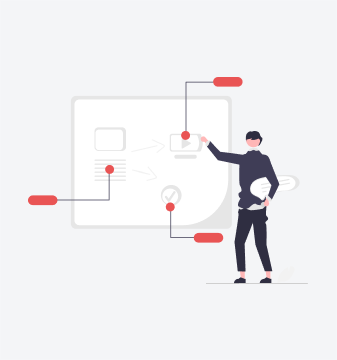Data is all around us. Data takes many different forms, from the number of steps we take each day tracked by our fitness watches to the ratings we give products purchased online to the type of cars people in our neighborhood drive. As someone working with data, whether in business, research, or data science and analytics, it’s crucial to understand the different types of data variables you’ll encounter. Buckle up as we dive into the fascinating world of nominal, discrete, ordinal, and continuous data!
What is Discrete Data?
Let’s start with discrete data, shall we? Discrete data is like the shy, introverted sibling in the data family. It includes values that are distinct and separate, with no in-between. Think of it like counting apples – you can have 1 apple, 2 apples, or 10 apples, but not 1.5 apples. The values of a discrete data variable can be listed out and often arise from counting something.
Examples of data discrete in nature include:
- The number of pets you own
- Shoe sizes
- Pages in a book
- Students in a class
Key characteristics of discrete data:
- Distinct, separate values
- Typically, integers resulting from counting
- Often, a finite number of possible values
- Values cannot be subdivided or broken into finer increments
What is Continuous Data?

On the flip side, we have continuous data – the extroverted, life-of-the-party sibling. Continuous data can take on any value within a range, including an infinite number of possible fractional values between whole numbers.
Examples of continuous data abound in the world around us:
- Height and weight measurements
- Temperature readings
- Time durations
- Distances
There’s an endless continuum of possibilities with continuous data, even between two values. A person’s height could be 5 foot 7 inches, or 5 foot 7.1 inches, or 5 foot 7.1052 inches, and so on to infinite precision. The key is that continuous data can be measured to finer and finer increments, depending on the precision of our measurement tools.
Continuous vs. Discrete Data
Now that we’ve met both discrete and continuous data, let’s see how they stack up head-to-head:
Discrete Data:
- Distinct, separate values
- Usually integers
- Result of counting
- Often, a finite number of values
Continuous Data:
- Any value in a range
- Measured to a level of precision
- Infinitely divisible
- Often a measurement like height, weight, time
While discrete data is great for counting and categorizing, continuous data shines when we want to measure and quantify things precisely. The type of data determines the types of visualizations, analyses, and statistical methods most appropriate.
Nominal vs. Ordinal Data
Beyond the discrete vs continuous distinction, there are two other key data types to know: nominal and ordinal. Nominal data consists of categories without any order or ranking between them. Classic examples include:
- Marital status: Single, Married, Divorced
- Eye color: Blue, Green, Brown
- Zipcodes: 90210, 10001, 60611
With nominal data, the categories have no inherent ordering or hierarchy. Married is not “greater than” or “less than” Divorced.
Ordinal data, on the other hand, has a ranked ordering between categories. The categories themselves are discrete, but they have a clear sequence or ordering.
Examples of ordinal data include:
- Economic status: Low, Medium, High
- Satisfaction rating: Very Unsatisfied, Unsatisfied, Neutral, Satisfied, Very Satisfied
- Frequency scales: Never, Rarely, Sometimes, Often, Always
While we can order ordinal categories, the spacing between them isn’t necessarily equal or measurable. The difference between Low and Medium economic status isn’t necessarily the same as the difference between Medium and High.
Putting It All Together
We know it might feel overwhelming at first, but understanding these data types is essential if you want to work with data like a pro. Once you know what types of data you’re working with, you’ll be able to:
- Create visualizations that truly showcase your data’s story
- Choose statistical methods that are the perfect fit for your data type
- Sidestep embarrassing data blunders, like trying to calculate the average of phone numbers (we’ve all been there!)
- Talk about your data with clarity and precision




